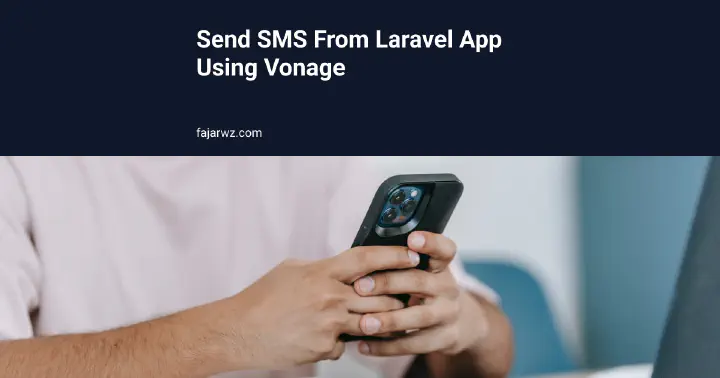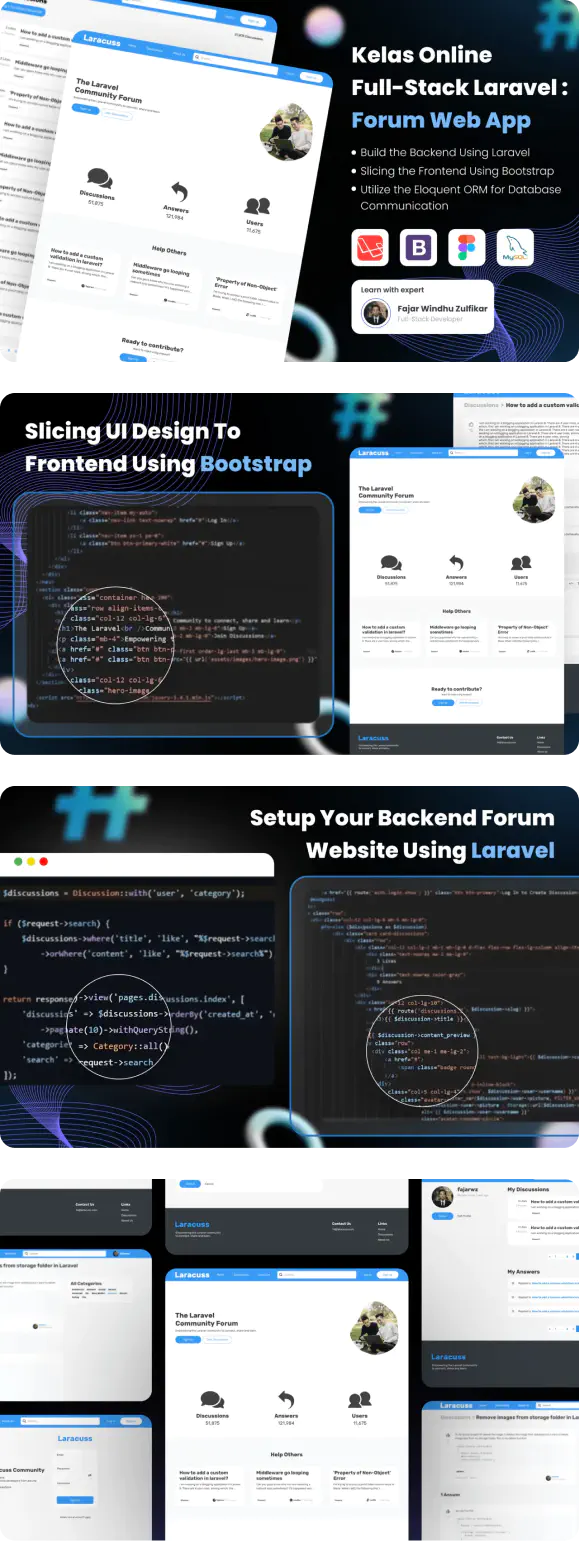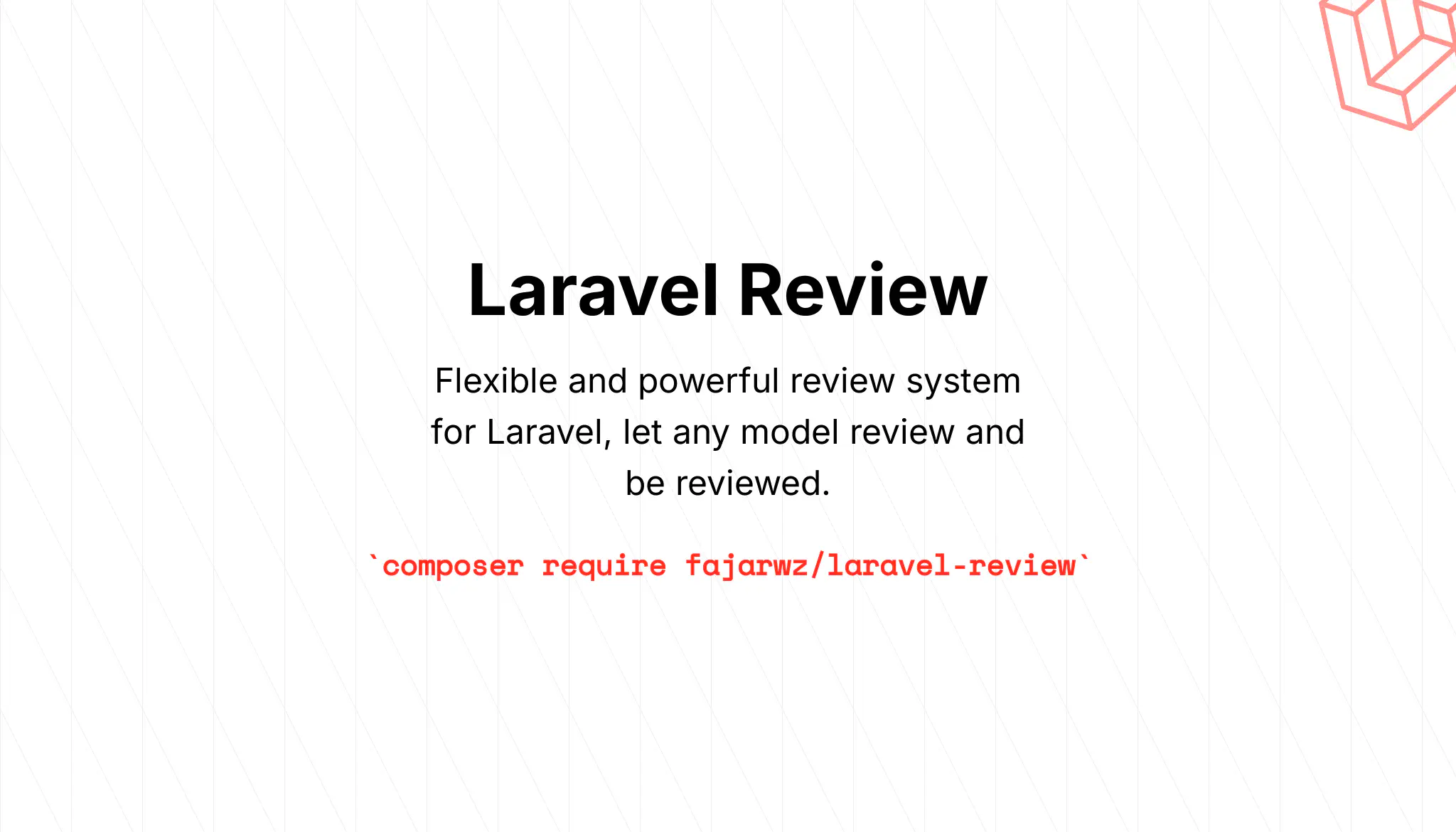💡 I included the link to the example repository at the conclusion of this tutorial.
Maybe right now you need to send an SMS via Laravel app. There are some Laravel packages that can connect to third-party service that can handle SMS notification such as Vonage or Twilio.
💡We’ve already covered how to send SMS messages using Twilio in another article so please check it out if you prefer Twilio over Vonage.
In this tutorial, we’ll be using Vonage to send our SMS with the help of laravel/vonage-notification-channel package.
Step 1: Create A Vonage Account
Now you want to create a Vonage account and verify your email. After that you can go to Vonage Dashboard.
When we first sign up, our account has €2 EUR free credit and we can use it on up to 10 numbers for demo mode until we top up our account. These 10 numbers should be registered first to our test numbers, but this whitelisting only apply in the free demo mode, paid clients don’t have this limitation. Demo mode messages also contain a watermark at the end of it’s message (which says “[FREE SMS DEMO, TEST MESSAGE]”).
Every message I send Vonage charge me for €0.18. This is a good start to experiment with Vonage and check whether it is a good fit for your project or not. Once you sure to add Vonage to your project, you can top up your account.
Step 2: Installation
After we create a Vonage account, we can continue to install the laravel/vonage-notification-channel, a Laravel’s first party package.
composer require laravel/vonage-notification-channel
After the installation completed, we can head to .env file and add the following key with your own value.
VONAGE_KEY=your-vonage-key
VONAGE_SECRET=your-vonage-secret
VONAGE_KEY and VONAGE_SECRET can be obtained from your Vonage dashboard account.
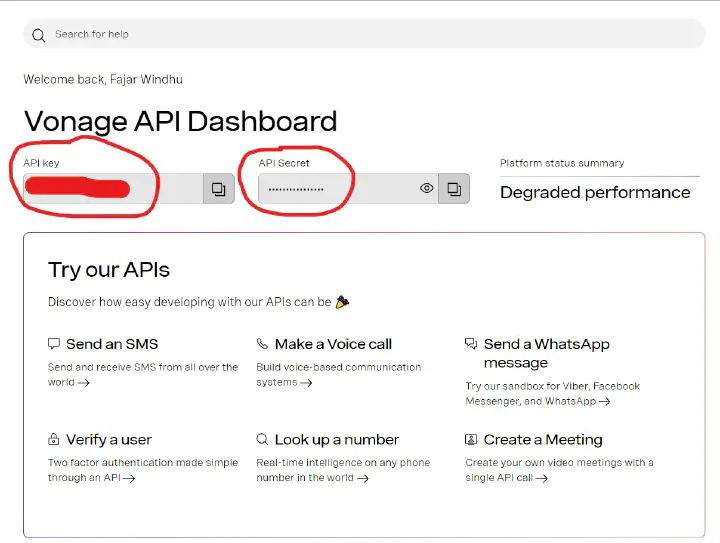
Step 3: Generate Notifications
Create a class for our spesific notification with below artisan command, for example we create a SuccessfulRegistration notification. This will generate the class in App\Notifications folder. If we don’t have the folder yet, Laravel will create one for us.
php artisan make:notification SuccessfulRegistration
Make sure to change the via method to return vonage in the SuccessfulRegistration class
// App\Notifications\SuccessfulRegistration.php
public function via($notifiable)
{
return ['vonage'];
}
Step 4: Create Notification format
Use the toVonage method and format the notification. We can create a simple message like so:
// App\Notifications\SuccessfulRegistration.php
use Illuminate\Notifications\Messages\VonageMessage;
use Illuminate\Contracts\Queue\ShouldQueue;
class SuccessfulRegistration extends Notification implements ShouldQueue
{
use Queueable;
// Here we will also pass the name variable
public function __construct(private string $name)
{
//
}
// ...
/**
* @param mixed $notifiable
* @return \Illuminate\Notifications\Messages\SlackMessage
*/
public function toVonage($notifiable)
{
return (new VonageMessage())
->content('Welcome to My App, ' . $this->name . '!');
}
// ...
}
Notice that I’ve also implements the ShouldQueue interface. This means that when we use SMS service in our request, we can immediately send our response return to the user without the need to wait for the SMS to be sent first. The SMS task will be send to our project’s queue workers in the background.
Step 5: Sending Notifications
We can send the notification in two ways: Using Trait and Facade
Read also: Send Slack Notifications From Laravel App
Using Trait
For example, we want to send a SMS to our users and we have their phone number stored in phone_number field. If you try to follow this tutorial with a new installation of Laravel, you want to add a phone_number field to your users table migration file first like so:
Schema::create('users', function (Blueprint $table) {
...
$table->string('phone_number');
...
});
Then add this to your database/factories/UserFactory.php
public function definition()
{
return [
...
'phone_number' => fake()->phoneNumber(),
...
];
}
And add this to your database/seeders/DatabaseSeeder.php
public function run()
{
\App\Models\User::factory(10)->create();
}
Then execute php artisan migrate --seed.
After we have user’s phone number in our users table then create a new routeNotificationForVonage method on our User model that return phone_number field. And make sure that our User model use Notifiable trait like so:
namespace App\Models;
use Illuminate\Foundation\Auth\User as Authenticatable;
use Illuminate\Notifications\Notifiable;
class User extends Authenticatable
{
use Notifiable;
// ...
public function routeNotificationForVonage($notification)
{
return $this->phone_number;
}
}
Now whenever we try to send a SMS to a user using Trait method, we will use their phone number stored in phone_number field.
Finally, to send a SMS to the user we can use the notify() method that is provided by this trait to send the notification.
use App\Models\User;
use App\Notifications\SuccessfulRegistration;
public function byUserModel() {
$user = User::findOrFail(1);
$user->notify(new SuccessfulRegistration($user->name));
return 'Send SMS via Vonage success!';
}
After the above action executed, our user whose name “John Thor” should see a SMS message saying “Welcome to My App, John Thor!”.
Here is another examples of the SMS sent using Vonage.
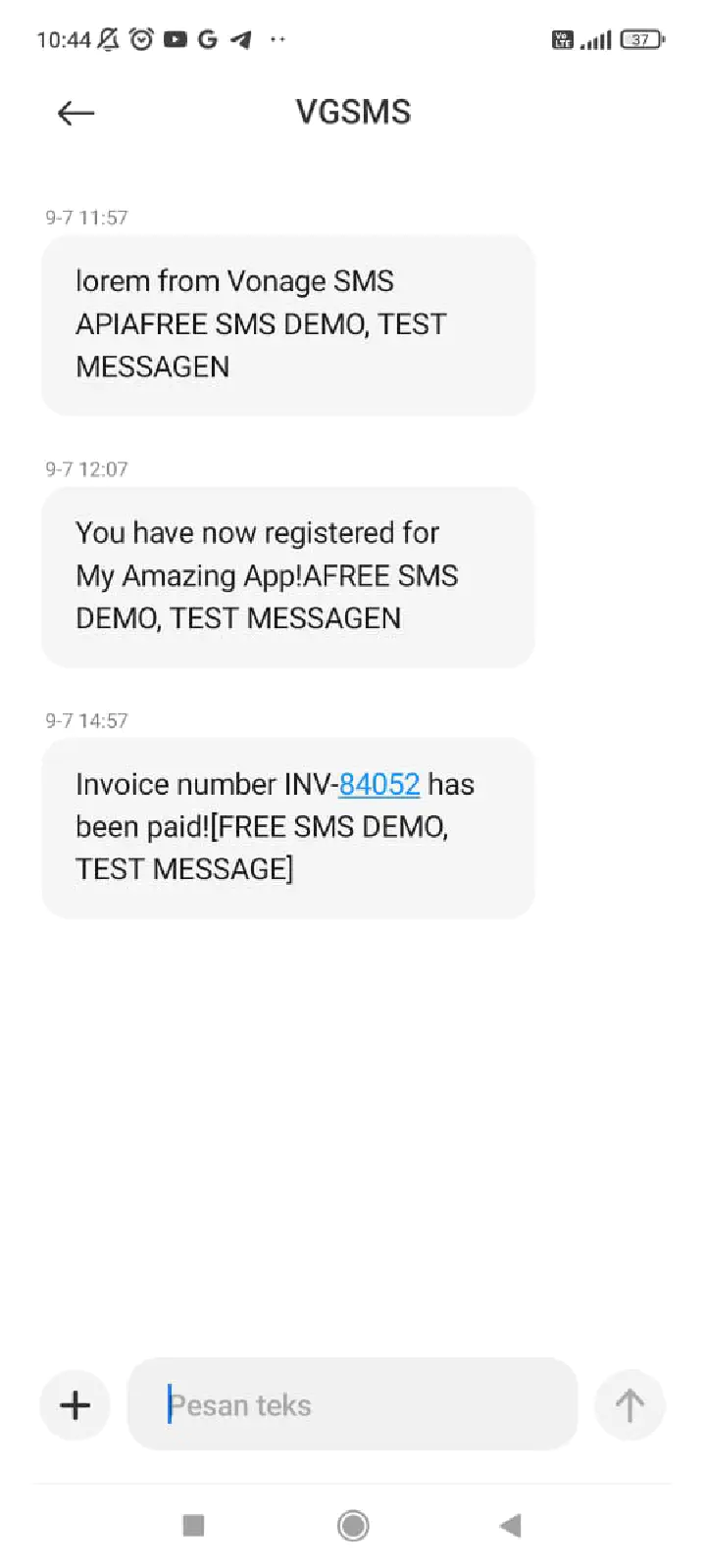
Using The Notification Facade
Another way is using Notification facade. We can use this in any class.
For example the use case here is to notify our admin whenever there is an invoice that has been paid.
I use .env and config/app.php to store the admin number so I made this configuration. First I add another .env variable like so:
VONAGE_SMS_FROM=62xxxxxxxx
And add below key and value to the config/app.php.
return [
// ...
'admin_sms_number' => env('VONAGE_SMS_FROM'),
// ...
]
I also make another notification so it can fit our use case.
<?php
namespace App\Notifications;
use Illuminate\Bus\Queueable;
use Illuminate\Contracts\Queue\ShouldQueue;
use Illuminate\Notifications\Messages\VonageMessage;
use Illuminate\Notifications\Notification;
class InvoicePaid extends Notification implements ShouldQueue
{
use Queueable;
/**
* Create a new notification instance.
*
* @return void
*/
public function __construct(private string $invoiceNumber)
{
//
}
/**
* Get the notification's delivery channels.
*
* @param mixed $notifiable
* @return array
*/
public function via($notifiable)
{
return ['vonage'];
}
/**
* Get the mail representation of the notification.
*
* @param mixed $notifiable
* @return \Illuminate\Notifications\Messages\MailMessage
*/
public function toVonage($notifiable)
{
return (new VonageMessage)
->from('My App')
->content('Invoice number ' .$this->invoiceNumber . ' has been paid!');
}
/**
* Get the array representation of the notification.
*
* @param mixed $notifiable
* @return array
*/
public function toArray($notifiable)
{
return [
//
];
}
}
And then call it inside a method in our controller.
use Illuminate\Support\Facades\Notification;
use App\Notifications\InvoicePaid;
Notification::route('vonage', config('app.admin_sms_number'))
->notify(new InvoicePaid('INV-84052'));
Conclusions
That’s it, it’s easy to send SMS message from Laravel app. First create a Vonage account, install the package required, and send the notification via one of the two ways: Trait or Facade.
💻 A repo for this example case can be found here fajarwz/blog-laravel-sms-vonage.
Any questions about this tutorial? Please comment below 👇, thank you for following this article!
Further Reading
SMS Notifications - Laravel Docs SMS API | Vonage
Read also: Send Slack Notifications From Laravel App
